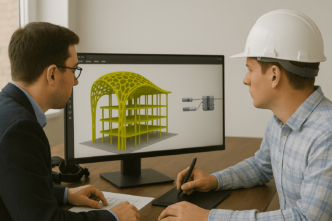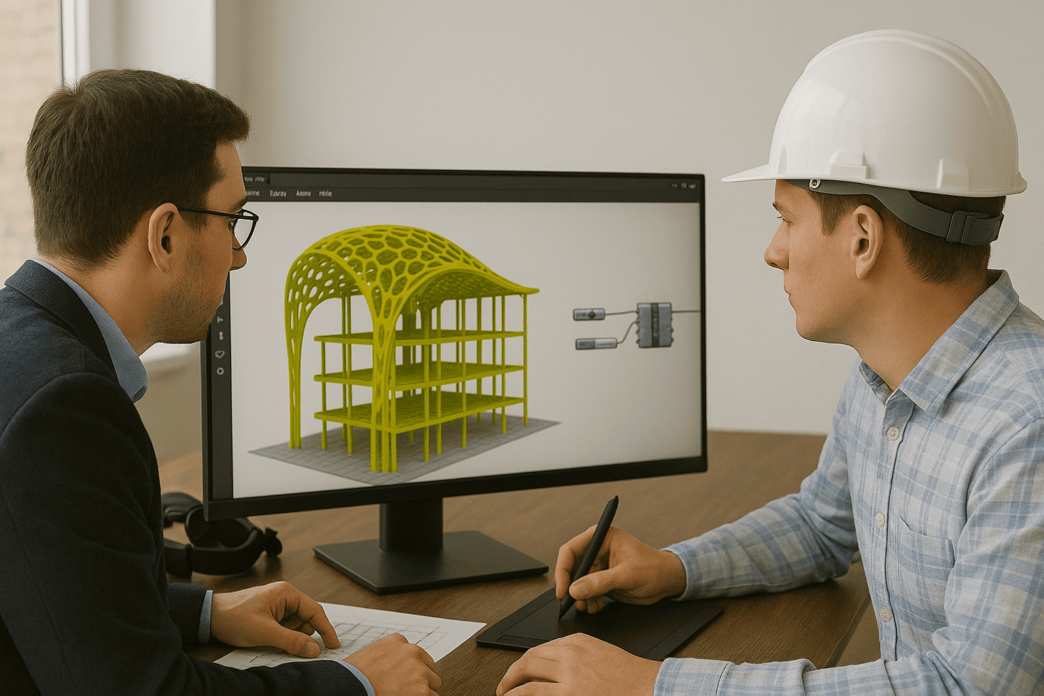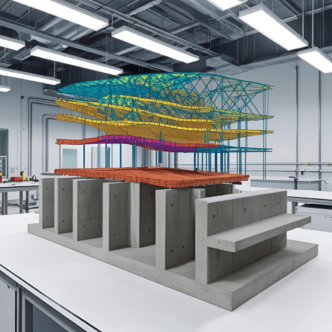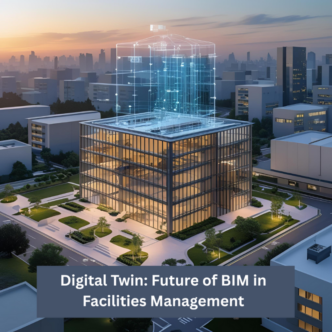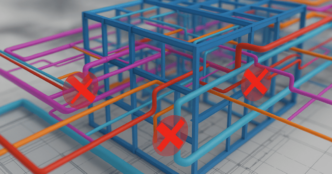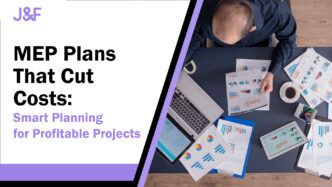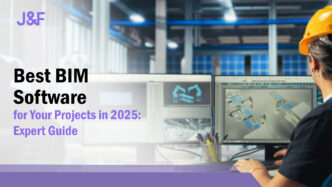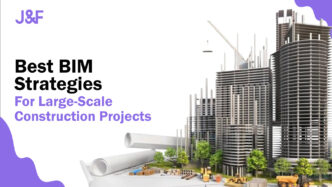Generative design reinforces innovation in design and upholds critical thinking. Unlike traditional design practices, generative design can yield countless design ideas based on the aesthetic requirements. The best part is that these designs are not only unique but are also compliant with industry standards and building codes. Generative design is all set to revolutionize the future of the AEC industry with innovation, precision, and versatility. Unlike traditional drawings, generative design leverages the power of AI and advanced computational capabilities to deliver precision-driven outcomes tailored to the project’s requirements and constraints. Let’s break down how generative design is transforming the future of BIM and structural engineering.
An Interplay Between Structural Engineering and Generative Design
Structural engineering is a vital component of civil engineering. It is all about identifying, evaluating, and rendering solutions tailored to the specific needs of the project. It is crucial to creating robust and durable establishments. Design sits at the forefront of structural engineering, contributing towards everything that constitutes the project.
Traditional designers and architects often invest too much time and energy in generating viable drawings, often leading to schedule overruns. That’s where generative design kicks in!
Generative design is an advanced approach to conceptualizing and improving design. It harnesses the power of algorithms and advanced computational capabilities to generate a range of design outputs tailored to materials, aesthetic requirements, and manufacturing constraints. Revit, ETABS, Civil 3D, and STAAD Pro are among the top tools used by structural engineers that ease the design process.
Looking to elevate your structural designs with advanced consultancy support?
Partner with J&F – Your Trusted Engineering Consultancy
Understanding How Generative Design Transforms Structural Engineering
Structural Engineering Services heavily relies on generative design when catering to sizeable or complex projects. Let’s have a closer look at how generative design is redefining the Architecture, Engineering, and Construction (AEC) industry.
1. Efficient Structural Systems
Apart from measurements, the generative design can consider critical parameters like material properties, varied loads, and environmental factors. The computational algorithms use such parameters to generate a number of structurally sound designs. Besides, generative design can optimize material usage, enabling stakeholders to construct eco-friendly establishments. BIM services aggressively use generative design for informed decision-making.
2. Minimising Carbon Footprint
A generative design can pave the way for eco-friendly construction by capitalizing on green building design criteria. Through generative design, professionals can test a variety of building materials and components for structural reliability and environmental impact, enabling eco-friendly construction from the ground up.
3. Adaptive and Resilient Designs
A construction project accommodates myriad components of varied sizes, each serving a distinct purpose and offering unique characteristics. Verifying how these components fare under varied environmental conditions can be downright daunting, especially during the pre-construction era.
But that is not the case if you are using the iterative algorithms harnessed by the generative design tools. These algorithms can perform load testing or any other examination in a virtual environment to verify if the specific component meets the structural requirements. It can enable stakeholders to ensure safer and more robust construction from the ground up.
4. Architectural Innovation
Generative design opens the world of possibilities in terms of designs and geometries. You can expect it to deliver hundreds of design variations within a few clicks. This is practically impossible with conventional design tools. Also, generative design software seamlessly navigates complex geometries to meet modern architectural needs.
5. Rapid Prototyping
Working on various designs and picking an apt one is daunting, especially when leveraging traditional methods. Luckily, that is not the case with generative design. Structural engineers can unlock unlimited design options using specific software specifically designed for construction and architectural uses. And the best part is that these tools take no time in generating expected results while keeping compliance in the loop. Stakeholders can use these designs without worrying about accuracy issues.
Also Read: How BIM is Revolutionizing the Future of Structural Engineering and Construction
Top Tools Contributing to Generative Design
Here is the breakdown of top-tier tools that have brought generative design to the forefront of the AEC industry.
1. Autodesk Revit and Dynamo
Hailed as a leading BIM platform, Autodesk Revit is a go-to tool for stakeholders in the AEC industry. From creating parametric models and evaluating design options to automating design tasks, this popular software has transformed how designers approach building design and development. With the generative design extension, this tool enables designers to consider various parameters, including spatial efficiency, cost, and structural strength, yielding results that meet the project’s goals. The future of BIM overlaps with that of generative design in a positive way, taking design possibilities to the next level.
2. Rhino, Grasshopper, and Karamba3D
Widely used for parametric modeling, Rhinoceros (Rhino) is a staple in generative design workflows. With a plugin like Grasshopper, this tool unlocks untapped design territories that traditional methods can’t access. When used with Karamba3D, it can perform real-time simulation and optimization of load paths, materials, and geometries, ensuring architectural creativity aligns with structural performance.
3. TestFit and Spacemaker
Tools like TestFit can bring iterative design to life by generating project-specific layouts in no time. By zeroing in on inputs like zoning limitations, cost, and parking needs, TestFit takes no time in rendering iterative massing options, enabling stakeholders to make data-backed decisions.
Likewise, Spacemaker, which falls under the Autodesk ecosystem, leverages AI to determine site potential and correct structure positioning based on factors like wind patterns, sunlight exposure, etc. These tools can save big on land utilization by promoting space efficacy.
4. Houdini and Hypar
As a go-to tool in the VFX industry, SideFX Houdini has made its way into the AEC industry, thanks to its robust procedural modeling capabilities. Based on the various input data and constraints, it can create complex forms, including facades or infrastructure systems.
Hypar, on the other hand, is a cloud-based generative design platform that helps with encoding and sharing custom design logic. It unifies the entire project by rendering consistent data across disciplines, ensuring scalable project delivery.
5. CityEngine and Sustainability Tools
Esri’s CityEngine sits at the forefront of urban-scale generative design. With rule-based modeling and GIS data, it enables architects to bring the large-scale developments to life. It can test any number of planning options and urban design impacts.
Meanwhile, tools like Tally and One Click LCA backed a generative workflow with environmental data to elevate the project’s sustainability. They can help understand the impact of materials, enabling designers to choose eco-friendly alternatives during the design phase.
Want to implement these tools in your next project? Let J&F guide your digital transformation journey. Learn more about our BIM expertise.
Conclusion
The world of construction is evolving, and the use of generative design backed by a BIM environment is taking design possibilities to the next level. If you are up for this game-changing technology for your project, you can count on J&F’s proven expertise to lead the way. As a premier service provider with decades of experience, J&F stands tall with a robust portfolio of structural engineering services. Contact us to discuss how we can optimize your next project with AI-driven design and structural innovation.
